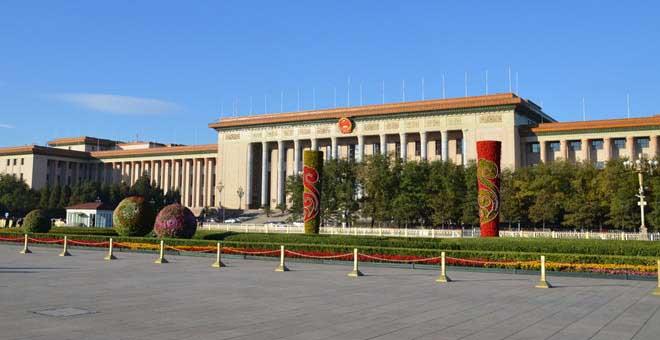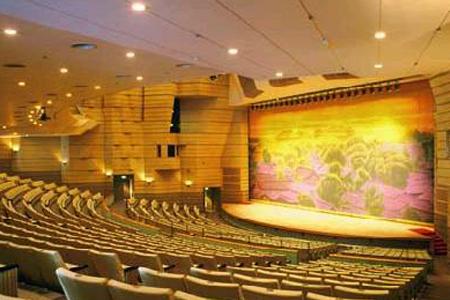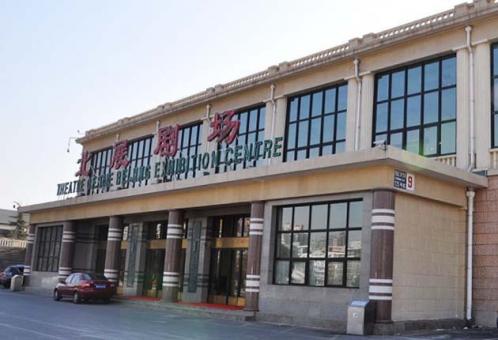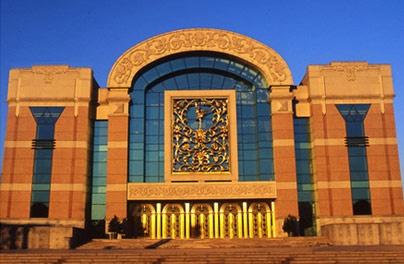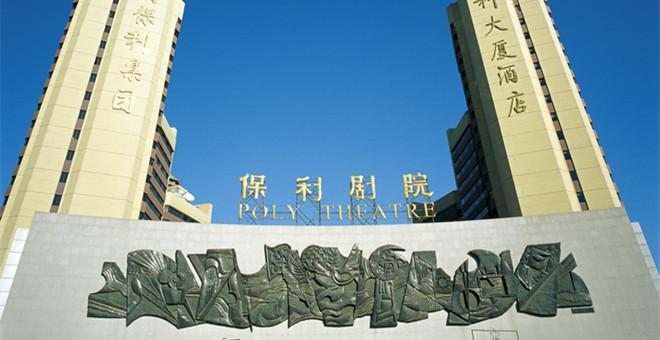曹东义:中西医——生命流动之舞的不同演绎
发布时间:2025-07-14 14:30:00 浏览量:41
在浩瀚的生命宇宙中,人体如同一座精密而复杂的工厂,无数物质在其中流动、转化,维系着生命的律动。中医与西医,作为探索这座工厂奥秘的两大医学体系,各自以独特的视角和方法,揭示着生命的本质与规律。它们对人体的认识维度差异显著,治疗方法也各具特色,共同构成了人类医学知识的多元画卷。
中医学,这门源远流长的医学智慧,深知人与自然息息相关,不断交换着物质与能量。《素问·五脏别论》有云:“所谓五脏者,藏精气而不泻也,故满而不能实;六腑者,传化物而不藏,故实而不能满也。”中医对人体的认识,超越了脏腑具体的形质,而是用流动的精微物质来揭示生命的本质。脏腑,在中医看来,不过是物质流动与储存的器皿,其气血阴阳、营卫津液,都是对精微物质的概括与描述。
中医的脏象学说,并非猜测体内脏腑的结构正常与否,而是关注其中的精气是否充满,脏腑之间的关系是否协调平衡。治疗之时,中医并非为了影响或改变脏腑的内部结构,而是致力于恢复其所产生、储存的精微物质,恢复脏腑之间阴阳气血的平衡。这种治疗理念,如同一位细心的园丁,用心浇灌着生命的花园,让每一株草木都能茁壮成长。
人与外界交换物质的过程,或体内物质的流动趋向,其基本运动形式是升降出入。《素问·六微旨大论》云:“出入废则神机化灭,升降息则气立孤危。”气、水液、食物,这些构成精微物质的来源,在体内的运动转化形式,无不是升降出入。中医深知,体内精微物质的流动不息、循环不止,既是人体生命指征正常的标志,也是体内基本物质发挥生理功能的必不可少的形式。
当精微物质流动过快或过缓时,便是病态的显现。气血津液、饮食水液,一旦停滞,便成为病气或致病的邪气。中医对此有着丰富的治疗方法:破气解郁、理气行气、破瘀逐瘀、活血化瘀、逐饮祛痰、攻积导滞……中医治病,并非介入、对抗、切除、移植,而是通过治疗进行转化,化害为利,变废为宝。使停滞的水饮、痰浊、瘀血、食积流动起来,参加到生命的物质代谢之中,完成质的转化与质变。这种治疗方法,既环保又和谐,无论对于环境还是人体,都不构成污染和危害。
而现代医学,对于气体交换、血液循环的认识,与中医有着诸多相似之处。人体靠着这种不停的运动,为细胞的代谢运输营养和运走代谢产物。神经内分泌调节、免疫监视、细胞因子的产生与表达……一切生命活动都离不开物质的流动。然而,现代医学在治疗方法上却与中医截然不同。它强调的是介入与特异消除病因、纠正病理变化、切除病变组织、改造或移植不良的器官。这种追求精准与速效的治疗方法,无疑为现代医学赢得了无数赞誉。
然而,我们不得不正视的是,现代医学的介入性治疗方法,虽然在一定程度上能够迅速缓解问题,但也可能带来一些潜在的副作用和风险。相比之下,中医的求和协、求平衡思路,则更加注重人体的整体性和自然性。它强调通过调整人体的内在环境,来增强人体的自我修复能力和抗病能力。这种治疗方法,虽然可能相对缓慢一些,但却更加符合人体的生理规律和自然法则。
举个例子来说,对于一位患有慢性胃炎的患者,现代医学可能会选择使用抗生素来杀灭幽门螺杆菌,或者通过手术切除病变部分。而中医则可能会选择通过调理脾胃、疏肝理气的方法来治疗。虽然中医的治疗方法可能相对缓慢一些,但它却能够从根本上改善患者的体质和内在环境,从而达到长治久安的效果。
再者,对于一位患有冠心病的患者,现代医学可能会选择使用支架或搭桥手术来治疗。而中医则可能会选择通过活血化瘀、通络止痛的方法来治疗患者的瘀阻。中医的治疗方法虽然可能无法立即解决血管狭窄的问题,但它却能够改善患者的瘀血体质,促进血液循环和心肌供血情况,从而减轻患者的痛苦和提高生活和生存质量。
综上所述,中医与西医作为探索生命奥秘的两大医学体系,各自有着独特的认识维度和治疗方法。它们既相互独立又相互补充,共同构成了人类医学知识的多元画卷。我们应该尊重并学习两种医学体系的优点和长处,将它们有机地结合起来,为人类的健康事业贡献更多的智慧和力量。在未来的医学发展中,我们期待中医与西医能够携手并进、共创辉煌!
参考文献:《中医是善于改变微观的医学》作者:曹东义,《中医药通报》杂志,2005年第5期。
作者简介:梁世杰 中医高年资主治医师,本科学历,从事中医临床工作24年,积累了较丰富的临床经验。师从首都医科大学附属北京中医院肝病科主任医师、著名老中医陈勇,侍诊多载,深得器重,尽得真传!擅用“商汤经方分类疗法”、专病专方结合“焦树德学术思想”“关幼波十纲辨证”学术思想治疗疑难杂症为特色。现任北京树德堂中医研究院研究员,北京中医药薪火传承新3+3工程—焦树德门人(陈勇)传承工作站研究员,国际易联易学与养生专委会常务理事,中国中医药研究促进会焦树德学术传承专业委员会委员,中国药文化研究会中医药慢病防治分会首批癌症领域入库专家。荣获2020年中国中医药研究促进会仲景医学分会举办的第八届医圣仲景南阳论坛“经方名医”荣誉称号。2023年首届京津冀“扁鹊杯”燕赵医学研究主题征文优秀奖获得者。事迹入选《当代科学家》杂志、《中华英才》杂志。
Cao Dongyi: Traditional Chinese and Western Medicine: Different Interpretations of the Dance of the Flow of Life
In the vast universe of life, the human body is like a sophisticated and complex factory, in which countless substances flow and transform, maintaining the rhythm of life. Traditional Chinese medicine and Western medicine, as the two major medical systems that explore the mysteries of this factory, each reveal the essence and laws of life with their own unique perspectives and methods. Their understanding of the human body is significantly different, and the treatment methods also have their own characteristics, which together constitute a diverse picture of human medical knowledge.
Traditional Chinese medicine, a long-standing medical wisdom, understands that man and nature are closely related, constantly exchanging matter and energy. There is a cloud in "Su Wen: The Five Organs": "The so-called five internal organs hide essence and qi without diarrhea, so they are full but cannot be real; Those who have six internal organs pass on the incarnation but do not hide it, so the truth cannot be full. "Traditional Chinese medicine's understanding of the human body goes beyond the specific shape of the viscera, but uses the flowing subtle matter to reveal the essence of life. In the view of traditional Chinese medicine, the viscera is nothing more than a vessel for the flow and storage of substances, and its qi, blood, yin and yang, and yingweijin liquid are all generalizations and descriptions of subtle substances.
The visceral theory of Chinese medicine does not speculate whether the structure of the internal organs is normal or not, but focuses on whether the essence and qi in the body are full and whether the relationship between the internal organs is harmonious and balanced. During treatment, TCM is not aimed at influencing or changing the internal structure of the viscera, but is committed to restoring the subtle substances produced and stored by the viscera, and restoring the balance of yin, yang, qi and blood between the viscera. This healing philosophy is like a careful gardener, watering the garden of life with heart, so that every plant can thrive.
The process of exchanging substances between people and the outside world, or the flow trend of substances in the body, the basic form of movement is to rise and fall. "Su Wen: Six Micro Principles" cloud: "If you go in and out, the magic machine will be destroyed, and if you rise and fall, you will be lonely." "Qi, water, and food, which are the sources of subtle matter, and the forms of movement and transformation in the body, are all up and down. Traditional Chinese medicine is well aware that the continuous flow and circulation of subtle substances in the body is not only a sign of normal life signs of the human body, but also an indispensable form for the basic substances in the body to perform physiological functions.
When subtle matter flows too fast or too slowly, it is the manifestation of pathology. Once the qi, blood, and fluid of food and drink are stagnant, they will become sick qi or disease-causing evil qi. Traditional Chinese medicine has a wealth of treatment methods for this: breaking qi and relieving depression, regulating qi and qi, breaking blood stasis and chasing stasis, invigorating blood and removing blood stasis, drinking and removing phlegm, attacking accumulation and channeling stagnation...... TCM treatment is not intervention, confrontation, excision, and transplantation, but transformation through treatment, turning harm into benefit and waste into treasure. It makes the stagnant water drinking, phlegm turbidity, blood stasis, and food accumulation flow, participates in the material metabolism of life, and completes the qualitative transformation and qualitative change. This treatment method is environmentally friendly and harmonious, and does not constitute pollution and harm to the environment or the human body.
Modern medicine, on the other hand, has many similarities with traditional Chinese medicine in its understanding of gas exchange and blood circulation. The human body relies on this constant movement to transport nutrients and metabolites for the metabolism of cells. Neuroendocrine regulation, immune surveillance, cytokine production and expression...... All life activities are inseparable from the flow of matter. However, modern medicine is very different from Chinese medicine in terms of treatment. It emphasizes intervention and specific elimination of the cause, correction of pathological changes, removal of diseased tissue, and modification or transplantation of defective organs. This pursuit of precision and quick results has undoubtedly won numerous accolades for modern medicine.
However, we have to face up to the fact that the interventional treatment methods of modern medicine, although they can quickly alleviate the problem to a certain extent, may also bring some potential side effects and risks. In contrast, the idea of harmony and balance in traditional Chinese medicine pays more attention to the integrity and naturalness of the human body. It emphasizes the enhancement of the body's self-repair ability and disease resistance by adjusting the body's internal environment. This treatment, although it may be relatively slow, is more in line with the physiological laws of the human body and the laws of nature.
For example, for a patient with chronic gastritis, modern medicine may choose to use antibiotics to kill H. pylori or to surgically remove the lesion. Traditional Chinese medicine may choose to treat the treatment by regulating the spleen and stomach, soothing the liver and regulating qi. Although TCM treatment may be relatively slow, it can fundamentally improve the patient's physical constitution and internal environment, so as to achieve long-term peace and stability.
Furthermore, for a patient with coronary heart disease, modern medicine may choose to use stent or bypass surgery to treat it. Traditional Chinese medicine practitioners may choose to treat the patient's stasis obstruction by promoting blood circulation and removing blood stasis, and relieving pain. Although TCM treatment may not immediately solve the problem of blood vessel stenosis, it can improve the patient's blood stasis constitution, promote blood circulation and myocardial blood supply, thereby reducing the patient's pain and improving the quality of life and life.
To sum up, traditional Chinese medicine and Western medicine, as two major medical systems that explore the mysteries of life, each has its own unique dimensions of understanding and treatment methods. They are both independent and complementary to each other, and together they constitute a pluralistic picture of human medical knowledge. We should respect and learn from the advantages and advantages of the two medical systems, organically combine them, and contribute more wisdom and strength to the cause of human health. In the future development of medicine, we look forward to Chinese medicine and Western medicine going hand in hand to create brilliance!
Reference: "Traditional Chinese Medicine is Medicine Good at Changing Microscopic Methods" Author: Cao Dongyi, Journal of Traditional Chinese Medicine, No. 5, 2005.
Author Bio: Liang Shijie is a senior medical practitioner in traditional Chinese medicine with an undergraduate degree. He has been engaged in traditional medicine clinical work for 24 years and has accumulated a wealth of clinical experience. Following Chen Yong, chief physician of liver disease at Beijing Traditional Medicine Hospital, affiliated with Capital Medical University, and renowned old Chinese medicine, he has been treated for many years and received great attention. He specializes in the treatment of difficult diseases using "conversational traditional therapy" and special treatments combined with the academic ideas of Jiao Shude and Guan Yubo's ten-level diagnosis.He is currently a researcher at the Shude Tang TCM Research Institute in Beijing, a fellow at the new 3 + 3 project of traditional Chinese medicine flame inheritance in Beijing - a scholar at the inheritance workstation of Jiao Shude's protégés (Chen Yong),He is a standing committee member of the International Expert Committee on E-learning and Health Care, a member of the Jiao Shude Academic Heritage Special Committee of the Chinese Association for the Advancement of Chinese Medicine Research, and the first cancer specialist to be included in the chapter of the Chinese Pharmaceutical Culture Research Association. Won the 2020 China Association for the Promotion of Traditional Chinese Medicine Zhongjing Medical Branch held the eighth session of the Medical Saint Zhongjing Nanyang Forum "Classic Prescription Famous Doctor" honorary title. The winner of the first Beijing-Tianjin-Hebei "Pingui Cup" Yanzhao Medical Research Essay Award in 2023. His work was featured in the journal Current Scientist and the journal Chinese Talent.

